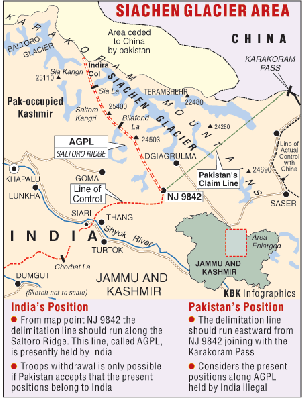Introduction
The constitutional change in the status of Jammu and Kashmir on 05 August 2019 and its division into two separate union territories of Jammu-Kashmir and Ladakh served as a major provocation for both China and Pakistan.
Moreover, as the country went into a celebration-mode, many politicians playing up to the music of the prevailing mass rhetoric commented that India’s next bound now is PoK. The exuberant Union Home Minister Amit Shah also declared in the Parliament that Askai Chin, which is under Chinese occupation, is a part of the UT of Ladakh.
Meanwhile, the Indian Army which was heavily committed in keeping the anti-national elements at bay in the Kashmir valley was taken by surprise by China. The People’s Liberation Army (PLA) of China made multiple transgressions across north Sikkim and east Ladakh starting from May 2020.
The Chinese not only occupied dominating heights in the Galwan valley, but also audaciously erected concrete structures to fortify their positions.
China has now unabashedly claimed its right over the complete Galwan valley and has been progressively building-up troops, infrastructure and war machinery in that area. Considering the quantum of troop’s buildup in east Ladakh, it appears that China means business here.
Do the recent developments in east Ladakh suggest that India could be facing an imminent threat of a localized two front military operation by China and Pakistan?
In order to comprehend the likely intent of our two adversaries, it is important to first understand the strategic significance of Siachen glacier.
Strategic Significance of Siachen Glacier
Siachen glacier is a triangular piece of ground that lies between the two spurs of Karakoram Range. The Glacier is around 78 km long and the major passes held by Indian troops on the Saltoro ridge are Sia La at 6100 m (20,000 ft) and Bila Fond La at 5800 m (19,000 ft).
The Saltoro ridge defines the western boundary of the glacier, where Indian and Pakistani troops face each other along the LoC and is called Sub Sector West (SSW).
The Sesser ridge is the glaciers eastern boundary and is called Sub Sector North (SSN); it is directly south of the Karakoram Pass adjacent to the LAC with China.
The strategic significance of the Glacier is that it lies South of the great watershed that separates Central Asia from the Indian subcontinent, and also, it creates a wedge between Pakistan and China in this region. The Saltoro ridge of Siachen glacier prevents the geographical and military linkage between PoK and China.
The Glacier`s melting waters are the main source that feeds the Nubra River, which falls into the Shyok River. The Shyok in turn joins the Indus River, which is highly crucial to both India and Pakistan.
Saltoro Ridge overlooks Gilgit and Baltistan in PoK to its west and has to be crossed over by anyone seeking access from Skardu in Gilgit and Baltistan area through the Karakoram Pass to enter Tibet.
Furthermore, the peak located east of Siachen overlooks the eastern areas of Aksai Chin (disputed territory held by China). Therefore, Pakistani occupation of Siachen would be a serious threat to Ladakh from the north in conjunction with Chinese locations in Aksai Chin, providing these countries with a tactical advantage over India.
Significance of Galwan Valley
China over the years has been slowly ‘salami-slicing’ its way towards Siachen glacier’s eastern limit, i.e. the Sesser ridge, also called the Sub Sector North (SSN).
The maintenance of SSN is extremely difficult for India because of inadequate infrastructure and hostile weather conditions. However, on Chinese side the road network is well developed right up to the LAC and hence, SSN is highly vulnerable to ingress by PLA.
Immediately to the north of the SSN is the Karakoram pass which is the shortest approach from Leh in Ladakh to Chinese occupied Tibet Autonomous Region. PLA has a road from its garrison having a combined-arms battalion near the Karakoram Pass right up to the post on the Pass itself.
India has constructed a 224km Durbuk-Shyok-Daulet Beg Oldie (DBO) road and an airstrip at DBO to service the troops deployed in SSN.
However, during the summers months (May to October), this route was not available for the movement of troops as the Shyok river used to get flooded because of the melting glacier.
The route from Darbuk to DBO has now become all weather and useable throughout the year after a 430 meter long bridge across the Shyok River was inaugurated by Indian Defence Minister on 21 October 2019.This bridge has reduced the movement time to the SSN by half.
Hence, the ongoing violent standoff between Indian troops and PLA in the Galwan valley and the occupation of dominating heights by PLA to prevent movement of Indian troops and reinforcements to SSN can now be clearly seen in perspective.
Envisaged Dimensions of the Two-front Operation by China-Pakistan
The strategic objective of such a two front operation could be to provide depth to CPEC and Askai Chin, as also to establish a geographical linkage between PoK and China by capturing Siachen glacier and Galwan valley.
The political objective will be to weaken the hold of India over J&K, as also draw the attention of the world community towards a possible escalation to a full scale war over the Kashmir issue between the two nuclear nations. Lastly, the operation would also foreclose India’s offensive options in the area.
China, in all probability will play the role of a facilitator and may not employ its military strength, unless attacked by India.
Pakistan army, with the tacit support of PLA could launch an offensive to capture positions on the Saltoro ridge and the Siachen glacier. The support provided by PLA could include interdiction of logistics and reinforcement during the operation from SSN, as also, activate the complete LAC including NE, to restrict India from creating reserves.
Conclusion
China seems to have set the stage for military exploitation by Pakistan by covering the eastern flank of their operations, tied down Indian troops by creating mischief in Nepal and activated the LAC along Sikkim and Arunachal.
Considering the fact that the COVID pandemic has hit all countries quite severely and especially, Pakistan’s dire economic state will preclude any such misadventure by this ‘rogue nation’ at this stage.
However, a rogue nation and a deceitful dragon can never be trusted and India must remain ever vigilant with respect to all developments in our neighbourhood.






